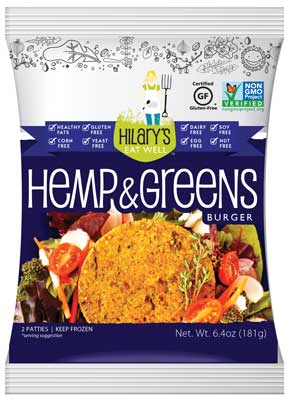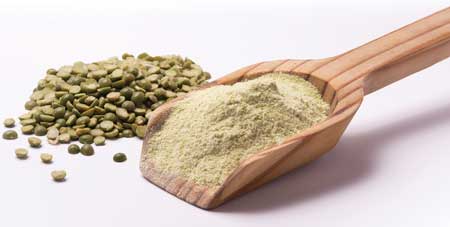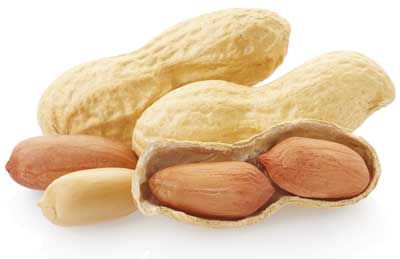Small Ingredients Offer Big Functional Benefits
INGREDIENTS
Nuts, seeds, and legumes are versatile ingredients, not to mention loaded with beneficial nutrients, making them favorites of both product developers and health-conscious consumers. In whole forms, they provide texture and flavor to a number of food and beverage applications, but that is not the only form that product developers and culinary professionals can use; ingredient manufacturers are further processing these ingredients into flours, oils, and other ingredients that can bring added benefits to food products.
Products from snacks and cakes to side dishes and beverages formulated with these ingredients continue to line grocery store shelves and promise consumers better nutrition, enhanced texture, and improved flavor. In fact, consumers will find nuts, seeds, and legumes in products that emphasize nutrition and better-for-you food choices as well as those that are positioned as indulgent. Chefs are experimenting more with these ingredients, featuring them in foods served across the menu. Even consumers can get creative with these ingredients by replacing croutons with seeds or chopped peanuts, using almond flour in gluten-free baking, or soaking walnuts in maple syrup as a topping for coffee cake and ice cream. Read on for more product development inspiration.
Nut Ingredients Combine Nutrition and Function
Nuts are long associated with a healthy lifestyle. Almonds and hazelnuts are excellent sources of vitamin E, pistachios are a great source of plant sterols, and cashews are rich in magnesium, points out the International Tree Nut Council Nutrition Research & Education Foundation, Davis, Calif. (nuthealth.org). Additionally, macadamias are an excellent source of manganese, walnuts are a great source of omega-3 fatty acids, and pecans are high in total flavonoids. And just one Brazil nut provides 100% of the Daily Value for selenium. Nuts also contain protein, fiber, and many more nutrients, making them ideal ingredients to include in any number of food applications. Bar applications are one of the most common. Consumer research conducted by the Almond Board of California, Modesto, Calif. (almonds.com/food-professionals), found that slightly more than half of consumers surveyed said the last bar they ate contained nuts.
 It is not just bar applications that utilize nuts; snack foods, confections, and beverages that contain nuts continue to hit store shelves as product developers around the world capitalize on the recognized health benefits of nuts as well as the flavors and textures unique to each variety of nut. Mars Chocolate North America in May 2015 introduced goodnessknows Snack Squares made with whole almonds, fruit, toasted oats, and dark chocolate and Snickers Mixed Nuts Bar that features a mix of almonds, hazelnuts, peanuts, caramel, and nougat. German company ültje sells cappuccino-flavored hazelnuts, Beau Ideals sells Green Chili Mint Cashew Nuts in India, and ICA, a leading grocery retailer in Sweden, offers packages of mushroom burgers made with goat cheese and walnuts. Other products that nut-loving consumers can enjoy are Chocolate and Hazelnut Rice Drink (Bjorg in France), Cranberry Walnut Dip and Apple Pistachio Dip (Italian Rose in the United States), and Dark Chocolate with Pistachios (Nestlé in Turkey).
It is not just bar applications that utilize nuts; snack foods, confections, and beverages that contain nuts continue to hit store shelves as product developers around the world capitalize on the recognized health benefits of nuts as well as the flavors and textures unique to each variety of nut. Mars Chocolate North America in May 2015 introduced goodnessknows Snack Squares made with whole almonds, fruit, toasted oats, and dark chocolate and Snickers Mixed Nuts Bar that features a mix of almonds, hazelnuts, peanuts, caramel, and nougat. German company ültje sells cappuccino-flavored hazelnuts, Beau Ideals sells Green Chili Mint Cashew Nuts in India, and ICA, a leading grocery retailer in Sweden, offers packages of mushroom burgers made with goat cheese and walnuts. Other products that nut-loving consumers can enjoy are Chocolate and Hazelnut Rice Drink (Bjorg in France), Cranberry Walnut Dip and Apple Pistachio Dip (Italian Rose in the United States), and Dark Chocolate with Pistachios (Nestlé in Turkey).
U.S.-based nut industry trade groups are showing how nuts can move beyond the snack category in both sweet and savory recipes and product concepts like Walnutty Veggie Meatballs, Gluten-free Walnut Cake, and Mediterranean Red Bean and Walnut Spread from the Walnut Marketing Board/California Walnut Commission, Folsom, Calif. (walnuts.org), and a green pistachio smoothie and pistachio garlic mint quinoa pilaf from the American Pistachio Growers, Fresno, Calif. (americanpistachios.org). The Turkish Hazelnut Promotion Group, Seattle, Wash. (hazelnutsfromturkey.com), focuses on how hazelnuts—with their buttery, toasty, smoky, and woody flavor notes—are a “premium indulgence” that give foods that contain them “an upscale quality.” Manufacturers of chocolate confections can combine hazelnuts with dark chocolate and fig, white chocolate and orange, milk chocolate and ginger, chocolate and toffee, and chocolate and graham cracker to create premium confections with layers of flavors and textures. The Georgia Pecan Commission’s Center for Pecan Innovation, Atlanta, Ga. (americasnut.com), promotes pecans not only as delicious inclusions for snacks and confections, which it highlighted at the 2015 Sweets and Snacks Expo with product concepts, but also as a meat substitute in vegetarian and vegan products and coatings for meats and fish.
Product developers are also taking note of the functionalities that nuts in their different forms—whole, pieces, ground, paste, flours, and oils—provide to foods and beverages. Nut pastes add creaminess to fillings for cookies and pastries or to soups and sauces while nut flours replace traditional wheat flours in gluten-free products. Whole nuts, nut pastes, and nut butters can be further flavored with combinations of spices, herbs, and seasoning blends. For example, Red Curry, Smoky Chipotle, and Sriracha seasoning blends newly developed by Wixon, St. Francis, Wis. (Wixon.com), give nut butters added distinction and play into some of today’s popular flavor trends.
 Alternative flours for baked goods are becoming more popular as manufacturers are expanding their gluten-free options or enriching their products to suit the consumers who want better-for-you foods. During the Institute of Food Technologists’ IFT15 event, Blue Diamond Almonds Global Ingredients Division, Sacramento, Calif. (bdingredients.com), introduced three almond flour varieties (extra fine natural, extra fine blanched, and fine blanched) that offer protein, fiber, calcium, and vitamin E to baked goods. “Our research showed that interest in almond flour is driven by the halo effect from the nutritional value of almonds,” says Jeff Smith, director of marketing for Blue Diamond. He explains that almond flour’s versatility makes it an ideal ingredient in many applications where traditional flour is used. “From batter and breading applications to a light texture for a cake, almond flour can be an ideal substitute. In addition, almond flour is perceived as a close substitute for traditional flours with regard to flavor characteristics. With its rich, slightly sweet, buttery taste, it’s a great alternative.” The food scientists even formulated Irish potato cheese waffles, macaroons, lemon crème pie, and carrot cake cookies using the new almond flours, he adds.
Alternative flours for baked goods are becoming more popular as manufacturers are expanding their gluten-free options or enriching their products to suit the consumers who want better-for-you foods. During the Institute of Food Technologists’ IFT15 event, Blue Diamond Almonds Global Ingredients Division, Sacramento, Calif. (bdingredients.com), introduced three almond flour varieties (extra fine natural, extra fine blanched, and fine blanched) that offer protein, fiber, calcium, and vitamin E to baked goods. “Our research showed that interest in almond flour is driven by the halo effect from the nutritional value of almonds,” says Jeff Smith, director of marketing for Blue Diamond. He explains that almond flour’s versatility makes it an ideal ingredient in many applications where traditional flour is used. “From batter and breading applications to a light texture for a cake, almond flour can be an ideal substitute. In addition, almond flour is perceived as a close substitute for traditional flours with regard to flavor characteristics. With its rich, slightly sweet, buttery taste, it’s a great alternative.” The food scientists even formulated Irish potato cheese waffles, macaroons, lemon crème pie, and carrot cake cookies using the new almond flours, he adds.
Baking with almond flour is easy, but one thing to keep in mind, Smith says, is that substituting traditional flour with almond flour cannot be done cup for cup. He suggests replacing one-fifth of a recipe’s wheat flour with almond flour and then experimenting with the proportions to achieve the desired texture and mouthfeel. When formulating wheat-free recipes, he says to add the same amount of almond flour in place of the traditional flour called for in the recipe and slowly add more almond flour to make a stiffer batter. Why? “Because almond flour does not absorb liquid the same as traditional flour, more will be required to thicken.”
Representatives from the Almond Board of California hosted small-group sessions at the company’s booth during the IFT15 event to discuss almond form functions. Led by John Csukor, research chef at KOR Food Innovation, participants learned how to incorporate almond ingredients like paste, meal, and flour into Perfect Snack Bar, Spice Dusted Almond Chip, Spiced Almond Milk, Almond Cheese Spread, Almond Butter Breakfast Bite, and Matcha Almond Fudge Bar (these concepts were available to all booth attendees). The organization also presented a Cooking Up Science session where Richard Cusick, chef at Evolution Artisan Confections, spoke about how almonds are a key ingredient in better-for-you snacks that fit the “clean snacking” trend. He demonstrated this by making Chocolate Almond Popcorn Balls.
--- PAGE BREAK ---
Seeds Add Big Value
Technically, seeds are the mature fertilized ovules of flowering plants and include beans, peas, and oilseeds—many of the ingredients described in this article. Generally, consumers would mention sunflower seeds, sesame seeds, poppy seeds, pumpkin seeds, and chia seeds when asked to give examples of seeds, though, so these are the types of ingredients covered in this section.
 Seeds, which are rich in a number of nutrients, are most often used as tasty toppings and inclusions, and some like flaxseed and sunflower seed are pressed into oils. Food product development and culinary applications that incorporate these ingredients include bars, salads, granola, and bakery, to name a few. Ground flaxseeds are added to smoothies for a nutritional boost while chia seeds add an interesting texture to clear liquid beverages like Millennium Products GT’s Enlightened Synergy Kombucha. Sunflower seeds form the base for products like Sunflower Dream Sunflower Drink and SunButter Sunflower Spread. At the IFT15 event, BI Nutraceuticals, Long Beach, Calif. (binutraceuticals.com), served a chocolate coconut smoothie made with pumpkin seed protein. Hemp seeds and hemp protein powder, which is produced from hemp seeds, are turning up in such products as Hilary’s Eat Well Hemp & Greens Burger, Hemp Health Evo Hemp Bars, Yumbutter Organic Superfood Nut Butter, and Manitoba Harvest Hemp Heart Bites. Sterling-Rice Group recently named the use of hemp seeds and hemp protein powder as one of its 2015 Natural Nine food trends particularly because hemp seeds and powder contain a complete protein that is easy to digest.
Seeds, which are rich in a number of nutrients, are most often used as tasty toppings and inclusions, and some like flaxseed and sunflower seed are pressed into oils. Food product development and culinary applications that incorporate these ingredients include bars, salads, granola, and bakery, to name a few. Ground flaxseeds are added to smoothies for a nutritional boost while chia seeds add an interesting texture to clear liquid beverages like Millennium Products GT’s Enlightened Synergy Kombucha. Sunflower seeds form the base for products like Sunflower Dream Sunflower Drink and SunButter Sunflower Spread. At the IFT15 event, BI Nutraceuticals, Long Beach, Calif. (binutraceuticals.com), served a chocolate coconut smoothie made with pumpkin seed protein. Hemp seeds and hemp protein powder, which is produced from hemp seeds, are turning up in such products as Hilary’s Eat Well Hemp & Greens Burger, Hemp Health Evo Hemp Bars, Yumbutter Organic Superfood Nut Butter, and Manitoba Harvest Hemp Heart Bites. Sterling-Rice Group recently named the use of hemp seeds and hemp protein powder as one of its 2015 Natural Nine food trends particularly because hemp seeds and powder contain a complete protein that is easy to digest.
Other seeds like pumpkin seeds, pine nuts (edible seeds harvested from pine cones), and sesame seeds are components in classic recipes for mole sauce, pesto, and tahini, respectively. Seeds even add flavor and texture to meat applications and vegetarian meat alternatives; Woodland Foods, Waukegan, Ill. (woodlandfoods.com), which sells seed ingredients, suggests using pumpkin seeds or sunflower seeds in either whole or ground forms in meat loaf and veggie burgers.
Roasting intensifies toasty and nutty flavors of seeds, making them a canvas for additional layers of sweet or savory flavors. Eden Foods sells a dry roasted pumpkin seed snack seasoned with tamari soy sauce, garlic powder, and cayenne pepper while Kathie’s Kitchen LLC uses ingredients like crushed tomato, coffee, cocoa, habanero, and maple sugar to produce SuperSeedz Gourmet Pumpkin Seeds in eight seasoned varieties (Maple Sugar & Sea Salt, Sea Salt, Cinnamon & Sugar, Cocoa Joe, Tomato Italiano, Curious Curry, Somewhat Spicy, and Super Spicy). SuperSeedz are more than a snack food though; the company developed recipes that show how SuperSeedz are ingredients in their own right as a topping on Asian slaw, a coating on lamb sliders, and an inclusion in batter for maple buckwheat flapjacks.
New Ways to Use Legumes
“Consumers are demanding foods with familiar, nutritious ingredients,” states Patrick O’Brien, manager of strategic business development at Ingredion, Westchester, Ill. (ingredion.com/us). “Many food manufacturers today are looking to replace wheat flour and add novel flours or proteins to their formulations to differentiate their products and branch out into new types of foods.” Legumes certainly fit the bill.
From the family Leguminosae, legumes include beans, peas, lentils, and peanuts. Beans, peas, and lentils are further categorized as pulses. Food manufacturers have gravitated to these ingredients, which are full of nutritional benefits and offer many functionalities, and are using them in everything from beverages to snack foods. Consumers can find legume-loaded products like Hope Foods Organic Garlic Lentil Superfood Dip, Purina Beyond Superfood Blend Barley, Egg & Cranberry Recipe Dry Cat Food (made with pea protein), and General Mills Cheerios Protein (made with lentils). Other products are The Daily Crave Lentil Chips, Mediterranean Snacks BeanStalks (a crunchy snack made with white cannellini beans, red pinto beans, and green peas), and Weight Watchers Mint Chocolate Brownie Bliss (made with pea fiber). There is even a lentil and curry burger mix from German company Davert that allows consumers to make vegan burgers at home. Legumes are used in whole forms in food products like side dishes and soups, but ingredients derived from them, such as pea protein isolate and pulse flour, are being offered up as vegetarian protein sources or replacements for wheat flour, respectively.
 The Popularity of Pea Ingredients
The Popularity of Pea Ingredients
Ingredient manufacturers are deriving several types of ingredients from the pea that are promoted as plant-based, label-friendly, non-genetically modified, and non-allergen. Pea ingredients (fiber, flour, protein, starch, rehydrated pea, pea hydrolysate, and textured pea) are used across all product categories from pet food and bakery to sauces and beverages. Peas contain many proteins, and the protein fractions are extracted and purified to produce pea protein isolates and pea protein concentrates, which are used to boost the nutritional quality of baked goods, snack foods, infant foods, and more. Peas are also a source of dietary fiber and starch used for food fortification and texture enhancement. A&B Ingredients, Fairfield, N.J. (abingredients.com), offers Pisane B9 pea protein isolate, which is manufactured by Cosucra, for use in baked goods like protein bars, granola bars, bread products, and extruded crisps. The ingredient is derived from yellow pea through an extraction process that does not use organic solvents, according to the company. It contains high levels of branched chain amino acids and has between 88% and 90% protein. The company’s Swelite pea fiber—extracted from the endosperm of the yellow pea—enhances texture by forming a matrix within meat or poultry paste to control cooking losses and keep the product tender, juicy, and in its original form throughout the cooking process, according to the company.
Several other companies offer ingredients derived from peas. Peazazz pea protein isolate from Burcon NutraScience, Vancouver, Canada (burcon.ca), is particularly suited for use in low- and neutral-pH beverages. Protein beverages continue to be popular, and some consumers are demanding that product developers use plant-based sources of protein to fortify these products. Because many of these protein beverage products often have low-to-neutral pH, certain types of protein ingredients can separate and cloud the beverage. Burcon promotes Peazazz as being 100% soluble at pH less than 4.0 to produce beverages that are transparent, heat-stable, and low in viscosity. Other pea protein ingredients like the ones in the Nutralys line from Roquette America, Geneva, Ill. (roquetteamerica.com), provide both well-balanced protein profiles and texture functions to foods and beverages. Nutralys Pea SF holds water and fat to provide emulsifying and gelling capacity. Nutralys Pea XF can enhance mouthfeel of different types of beverages and gels. Nutralys Pea BF was developed for bakery applications. Roquette also offers Nutralys Pea T textured pea protein as an alternative to soy-and wheat-based textured protein concentrates, and a pea starch ingredient that has gelling and thickening properties for meats, sauces, and cream and film-forming properties for certain coatings and other textured foods. World Food Processing, Randolph, Minn. (worldfoodprocessing.com), featured its PURISPea textured vegetable protein in Thai PURISPea Butter Stir Fry, High Protein Smoothie, Vegan Cheesecake Bites, and Walking Tacos product concepts at the IFT15 event. Finally, The Scoular Company, Minneapolis, Minn. (scoular.com/food), features a line of pea-based ingredients that consists of Pea Fiber, Pea Protein 50%, Pea Protein Isolate 80%, Pea Protein Isolate 85%, Organic Pea Protein Isolate 80%, and Pea Protein Crisps 60%.
--- PAGE BREAK ---
Thinking Beyond Side Dishes for Beans and Lentils
Two other varieties of pulses—beans and lentils—are eaten around world and are noted for their high contents of fiber, protein, and many other healthful nutrients. Product developers are increasingly investigating the uses of different forms of these ingredients, not only to boost the nutrient quotient of their products, but to improve quality attributes as well. Researchers, too, are learning how pulses function in various applications like gluten-free cakes, for example. Singh et al. (2015) showed that lowering the protein content of navy bean flour with the addition of navy bean starch brought the protein content to the level of wheat flour, making it a suitable replacement for wheat flour in gluten-free cake formulations. Bean proteins do not have gluten. Batter made with the navy bean flour in this experiment had significantly higher protein content and viscosity than batter made with cake flour. Adding navy bean starch to the navy bean flour helped to produce batter and a finished cake product that was comparable to those made with cake flour. The researchers write that navy bean flour and navy bean starch have potential as healthier alternatives in gluten-free cakes.
Food manufacturers can find navy bean powder and more pulse ingredients from ingredient manufacturers like Woodland Foods, which sells an array of bean and lentil ingredients. Several of the bean varieties are available as flours and powders with suggested uses like thickeners for sauce and soups and protein enhancers for dips and spreads.
 Through a partnership with pulse supplier AGT Food and Ingredients, Regina, Canada (agtfoods.com), Ingredion offers a line of pulse flours and proteins to meet consumers’ demands for products that are gluten-free or vegetarian or made with ingredients that are sustainability sourced or non-genetically modified, says O’Brien. One of the most recent projects that the two companies are addressing is helping industrial pasta manufacturers manage the rising cost and tight supply of eggs and egg whites by replacing egg whites in their formulations with pulse proteins while still maintaining the texture, taste, and overall product quality, he adds. They also contribute a wheat-like taste, texture, and mouthfeel to gluten-free foods. The companies are also assisting snack food manufacturers to formulate with pulse flours to develop baked and extruded snack food products that meet consumer demands for better-for-you and higher-protein products. “The goal is to create great-tasting, high-quality food products using simple, nutritious, and clean label ingredients at an affordable cost,” remarks O’Brien.
Through a partnership with pulse supplier AGT Food and Ingredients, Regina, Canada (agtfoods.com), Ingredion offers a line of pulse flours and proteins to meet consumers’ demands for products that are gluten-free or vegetarian or made with ingredients that are sustainability sourced or non-genetically modified, says O’Brien. One of the most recent projects that the two companies are addressing is helping industrial pasta manufacturers manage the rising cost and tight supply of eggs and egg whites by replacing egg whites in their formulations with pulse proteins while still maintaining the texture, taste, and overall product quality, he adds. They also contribute a wheat-like taste, texture, and mouthfeel to gluten-free foods. The companies are also assisting snack food manufacturers to formulate with pulse flours to develop baked and extruded snack food products that meet consumer demands for better-for-you and higher-protein products. “The goal is to create great-tasting, high-quality food products using simple, nutritious, and clean label ingredients at an affordable cost,” remarks O’Brien.
 The VegeFull line of bean ingredients from ADM, Chicago (adm.com), allows product developers to add the nutritional benefits of beans, particularly protein and dietary fiber, to a variety of baked goods, bars, sauces, dips, cereal, pet food, and more. And since beans are gluten-free and allergen-free, they are an ingredient option to consider when formulating gluten-free foods or foods that need to carry an allergen-free claim. Many pet owners are feeding their dogs and cats gluten-free and grain-free foods, and bean ingredients are suitable for use in formulating these products.
The VegeFull line of bean ingredients from ADM, Chicago (adm.com), allows product developers to add the nutritional benefits of beans, particularly protein and dietary fiber, to a variety of baked goods, bars, sauces, dips, cereal, pet food, and more. And since beans are gluten-free and allergen-free, they are an ingredient option to consider when formulating gluten-free foods or foods that need to carry an allergen-free claim. Many pet owners are feeding their dogs and cats gluten-free and grain-free foods, and bean ingredients are suitable for use in formulating these products.
The VegeFull ingredients are fully cooked and processed into different forms and include the bean varieties pinto, black, great northern, dark red kidney, chickpeas, small red, and navy. Ground bean pieces thicken liquid or creamy applications like soup or sauces and add bean identity in applications where whole beans are not preferred. Ground bean powders can thicken soups, sauces, dips, and meats and also aid in moisture retention, and can be used in pasta or snack foods. Other ingredients in the line include ground bean grits, which function similarly to the powders, but provide a bit more added texture and visual color, and ground bean noodles, which are ground beans pressed into a noodle form that can be rehydrated with water to use in ready-to-eat meals, sheeted products, and foodservice applications. ADM even offers a quick-prep version of whole cooked beans—simply rehydrate the beans in hot water and they are ready in 10–20 minutes—for dry packaged products.
Bean-containing product concepts ADM offered at the IFT15 event were Anytime Snack Mix (navy bean discs), Maple Brown Sugar Breakfast Cookie (black bean grits), Graham Cracker Crisp with Chocolate Almond Hummus (navy bean powder), Orchard Fruit & Nut Bar (navy bean crisps, red bean crisps), and Cool Beans Veggie & Fruit Smoothie (black beans).
Next month’s Ingredients section will recap some of the ingredient innovations and product concepts presented at the IFT15 event.
Improving Faba Bean Flour’s Functionalities
The research organization VTT Technical Research Centre of Finland, Uusimaa, Finland, (vtt.fi), developed a method that combines mechanical fractionation with bio-processing to produce faba bean flour and faba bean fractions used in gluten-free bread and pasta formulations (VTT 2014). The researchers explain that the faba bean is not typically used in baking because it contains compounds that can affect the baking process and the sensory characteristics of the finished products. Their method produced a protein-rich, gluten-free bread made from 70% faba bean flour that they report has better sensory characteristics, structure, and color than gluten-free bread made with a combination of maize, rice, and soy flours. They also formulated a gluten-free pasta product from 100% faba bean flour with sensory characteristics similar to pasta made from durum wheat semolina.
Sometimes You Feel Like a Nut … But You’re Really Not
 Despite the fact that they are often included in cans of mixed nuts, peanuts are technically a legume. (According to the Peanut Institute, peanuts are categorized with nuts for the purpose of nutrition research and recommended dietary patterns.) While Americans are most familiar with peanut butter and jelly or chocolate-covered peanuts, they are becoming more aware of the wide variety of culinary applications and food products that incorporate peanuts. And like their legume counterparts, peanuts pack plant protein, heart-healthy fats, and a range of micronutrients. Even their skins contain high amounts of polyphenols. Peanut consumption has been linked with a decreased risk of developing type 2 diabetes, heart disease, and high blood pressure and an increase in satiety, according to the Peanut Institute, Albany, Ga. (peanut-institute.org).
Despite the fact that they are often included in cans of mixed nuts, peanuts are technically a legume. (According to the Peanut Institute, peanuts are categorized with nuts for the purpose of nutrition research and recommended dietary patterns.) While Americans are most familiar with peanut butter and jelly or chocolate-covered peanuts, they are becoming more aware of the wide variety of culinary applications and food products that incorporate peanuts. And like their legume counterparts, peanuts pack plant protein, heart-healthy fats, and a range of micronutrients. Even their skins contain high amounts of polyphenols. Peanut consumption has been linked with a decreased risk of developing type 2 diabetes, heart disease, and high blood pressure and an increase in satiety, according to the Peanut Institute, Albany, Ga. (peanut-institute.org).
Like all of the ingredients mentioned in this article, peanuts are a versatile ingredient that can be used in a variety of forms in both sweet and savory applications. Peanut processors make it easy for product developers and food-service operators to incorporate peanuts into formulas and recipes. In addition to raw shelled, organic, and blanched peanuts, Golden Peanut and Tree Nuts, Alpharetta, Ga. (goldenpeanut.com), provides other ingredients derived from peanuts that offer functions in frying, baking, confectionery, and pet food applications. Peanut oil, for instance, has 0 g of trans fat/serving, a high smoke point, high stability, and mild flavor profile. Three types are available in the company’s portfolio: refined peanut oil, roasted aromatic peanut oil, and peanut extract. Partially defatted peanut flour is made from high oleic peanuts that are roasted and pressed in an oil-extracting process without solvents. The flour is available in two fat levels—12% and 28%—and they add plant-based protein and roasted flavor and aroma to products. Try peanut flour in bars, cereal, pet treats, low-fat peanut butter, confections, sauces, baked goods, and beverages.
Chef-instructors at the Culinary Institute of America, St. Helena, Calif., developed recipes for the Peanut Institute’s annual nutrition and culinary education program and showed how peanuts are truly a global ingredient. Mediterranean- and North African-inspired recipes included falafel made with peanuts in addition to the traditional chickpeas and peanut gnocchi that incorporated peanut flour in the dough. Peanut butter gave a creamy texture to baba ganoush while peanut oil created a crunchy coating on fried stuffed olives. Peanut ingredients provide function and flavor to popular foods in Latin America and Asia. Peanut flour combined with masa helped create a moist tamale while roasted peanuts pureed with other ingredients produced a marinade for Malaysian barbecue chicken. Chopped roasted peanuts added unexpected flavor and texture to arbol and chipotle salsas and chili-lime dipping sauce. Even regional American food can get an extra boost from peanut ingredients. For a smooth texture and nutty flavor, try peanut butter in barbecue sauce applications. The flavors of chopped peanuts toasted with herbs marry well with the meaty, umami flavor of mushrooms in veggie burgers.
www.ift.org
Members Only: Read more about nuts, seeds, and legumes at ift.org. Type the keywords into the search box at the upper right side of the home page.
 Karen Nachay,
Karen Nachay,
Senior Associate Editor
[email protected]
References
Singh, M., J. A. Byars, and S. X. Lui. 2015. “Navy Bean Flour Particle Size and Protein Content Affect Cake Baking and Batter Quality.” J. Food Sci. 80(6): 1229–1234.
VTT. 2014. “Gluten-free Faba Bean for Bread and Pasta.” Press release, December. VTT Technical Research Centre of Finland, Uusimaa, Finland. vtt.fi.
